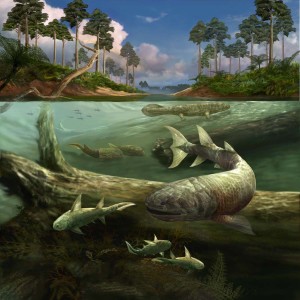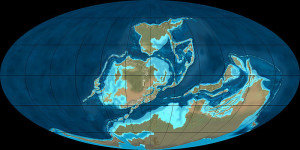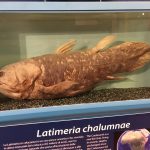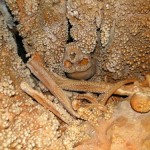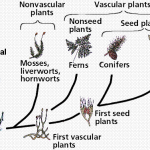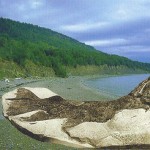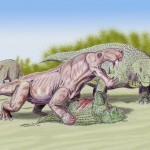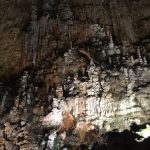This list briefly describes the creatures appeared (and not necessarily when they disappeared, if they did). Keep in mind that all of the creatures listed are marine, and most are soft-bodied invertebrates. Of course, this list doesn't even come close to covering all the Paleozoic creatures, just the ones I found worth mentioning -- if you think I missed one, let me know in the comments! Click on the images to enlarge; hover to see photo credit in alt-text (many are from Nobu Tamura).
Cambrian
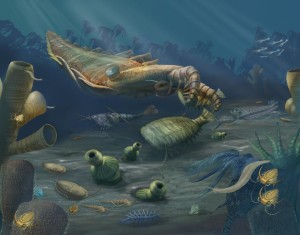
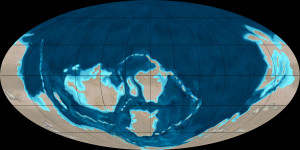
The Cambrian, which lasted 542 - 485 million years ago, saw O2 levels of 12.5% (versus 21% today), temperatures averaging 7°C warmer, and sea levels 30 - 90 m higher. The so-called "Cambrian Explosion" characterized this period, with an astounding variety of creatures appearing; however, the stage for life's rapid advancement (inasmuch some 70 million years can be called "rapid") had already been set in the Proterozoic, as suggested by the imprints left by soft-bodied Ediacaran fauna (see this photo). Watch the first eight minutes of this video to experience life in Cambrian oceans.
| Sponges | one of the earliest "animals" to appear, sponges seem boring, but I explain that they are actually pretty awesome | 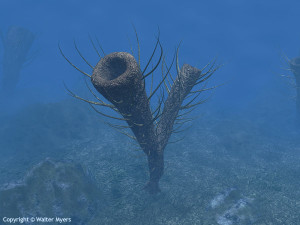 |
| Anomalocaris | segmented, armored, dorsoventrally-flattened predator up to 2 m long with two large eyes and two feeding appendages protruding from the mouth; related to the ancestor of arthopods | 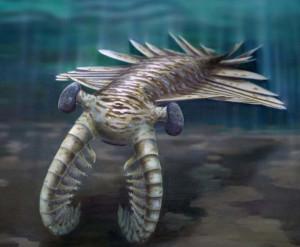 |
| Opabinia | 7 cm long dorsoventrally-flattened stem-arthropod with five stalked eyes and a proboscis | 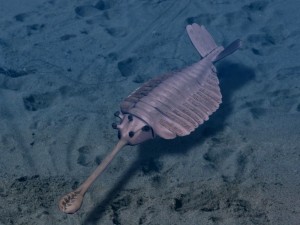 |
| Hallucigenia | 3.5 cm long spiky ancestor of velvet worms | 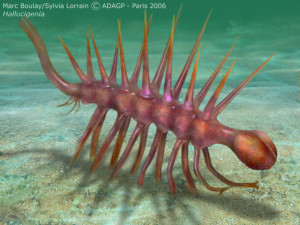 |
| Wiwaxia | 5 cm long slug-like creature with armored plates and spikes on the top of its body | 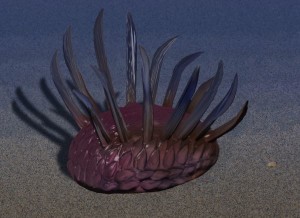 |
| Pikaia | 5 cm eel-like laterally-flattened creature with muscle segments; related to the ancestor of vertebrates | 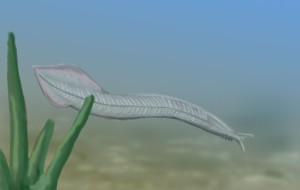 |
| Haikouichthys | 2.5 cm fish-like chordate | 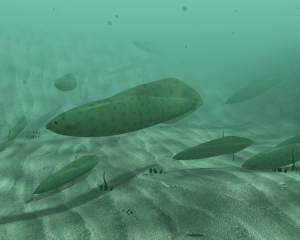 |
| Halkieriids | 5-cm long, armored, slug-like creature with a "shell" on each end; possesses features of arthopods, brachiopods, and molluscs | 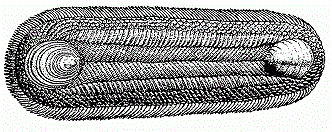 |
Ordovician
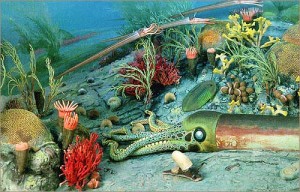
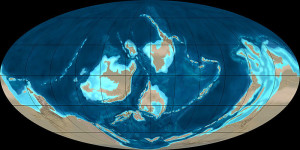
The Ordovician, which lasted 485 - 443 million years ago, saw O2 levels of 13.5% (versus 21% today), temperatures averaging 2°C warmer, and sea levels 140 - 220 m higher. During this period, cephalopods became awesome, the first jawed fish appeared, and plants crept onto land. An extinction related to glaciation marked the end of this period. Watch this video to experience life in Ordovician oceans.
| Horseshoe crabs | this familiar beach-going arthropod and distant cousin of spiders appeared 540 million years ago and has been going strong ever since (they come on land to lay eggs); in recent times, their unique blood has helped study medicine | 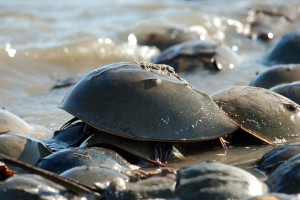 |
| Trilobites extinct at the end of the Paleozoic | Agnostida: small (5 mm), no eyes, head (cephalon) and tail (pygidium) equal in size, few thoracic segmentsPolymerida: the quintessential trilobite; larger (up to 0.7 m), large eyes, distinct cephalon, several thoracic segments | 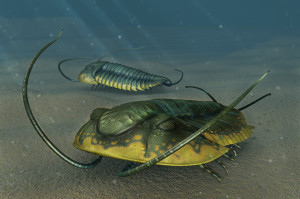 |
| Coral | Rugose: bilateral, solitaryTabulate: radial, colonial | 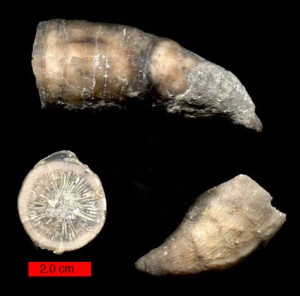 |
| Brachiopods | an abundant reef-building phylum in the Paleozoic with a few extant species today; superficially resemble bivalves but internally, have a different setup and feeding mechanisms, and externally, different symmetry | 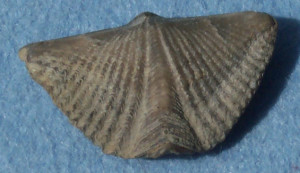 |
| Cephalopods | early cephalopods had straight shells, with evolution would ultimately shaped into the curled, chambered shells of nautiloids and ammonites | 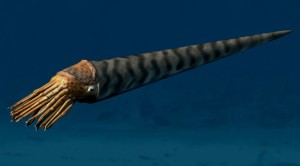 |
| Crinoids | the first echinoderms, a filter-feeding animal resembling a pant; "forests" of crinoids existed in the Paleozoic, evidenced by their abundance in ancient limestones (encrinites), which contain crinoid segments (columnals) | 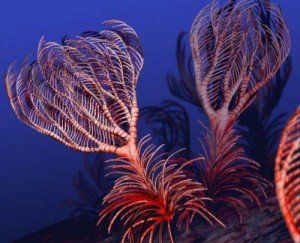 |
Silurian
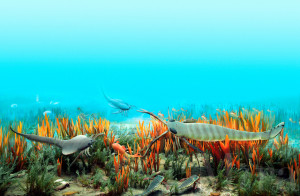
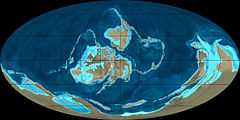
| Eurypterid | scorpion-like predators with pincers and the largest arthropods ever discovered at a whopping 2.5 m long | 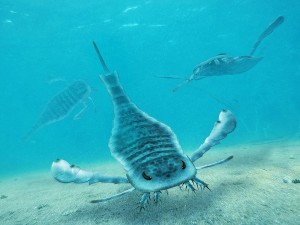 |
| Stromatoporids | important but poorly-undestood Silurian reef-builder with similarities to both sponges and corals | 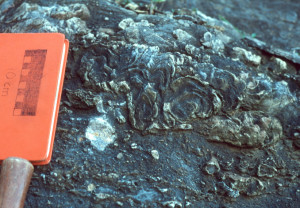 |
| Bryozoans | superficially and behaviorally similar to coral, but more complex (with organs) and in their own phylum, these are colonial calcifiers (and made part of Florida!) | 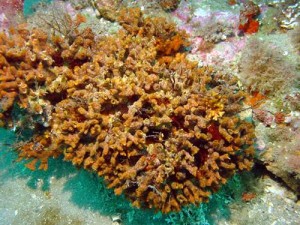 |
Devonian
